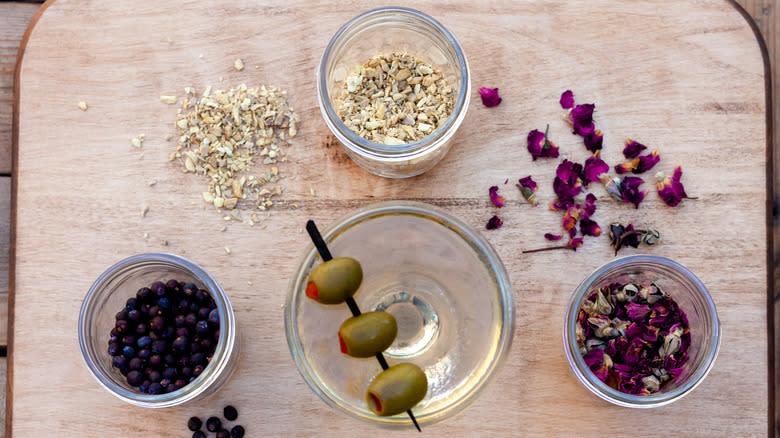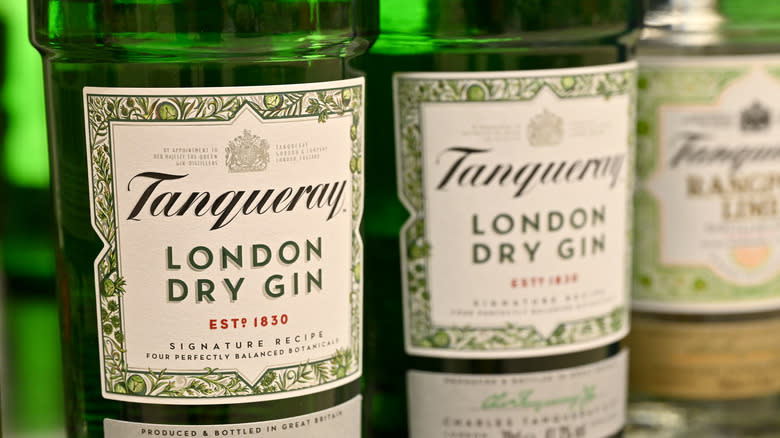A Major Mistake When Cooking With Gin Is Using Too Much Of It

Whether it's the vodka in the aptly named penne alla vodka, or some brandy in a flambé, spirits do take on culinary applications. However, they hardly play the role of a last-minute flavoring -- with their strong palates and boozy character, too much can overpower a dish. Plus, when employed alongside proteins, too much liquor affects texture, too.
Such careful considerations are especially true with gin, whose pungent character is especially prone to overbearing flavors. Its combination of juniper berries and botanicals inspires a range of tastes, which can include herbal, citrusy, and piney notes. Wondrously aromatic, the booze imbues foods with a unique twist.
So instead, only incorporate a little bit of the spirit at a time, in a manner similar to extracts. Pair the liquor with salty proteins, like fish, shrimp, and other seafood, before finishing on a hot pan. Or pour a jigger into a dessert, especially one with tangy citrus notes -- mirroring a cocktail in bite form. Bridge the gap between drink and food recipes to uncover innovative delights.
Read more: 23 Cocktails To Try If You Like Drinking Gin
Utilize Gin Sparingly For The Tastiest Results

Sure, an overpour of gin may tarnish a dish, but that doesn't mean it's an ingredient not worth employing. The liquor best complements seafood, chicken, and tart, brightly flavored desserts. Add gin to a tangy, citrus-flavored syrup for incorporation into a tart. Or craft a boozy-flavored jelly, reinventing the Jell-O shot into a more elegant affair. Plus, the herbal palate aligns well with various ice cream flavors. What's essential is that the sweet canvas will meld with the gin's flavors.
When it comes to savory dishes, treat the liquor like vodka; it's all about incorporating in parallel to a hot dash of heat. Gin can create its own aromatic version of a pasta sauce or offer the perfect finishing flavor to some shrimp or fish. Plus, it can mingle with flavors already found in the bottle. Pair gin with citrus rinds and peppercorns to create a super aromatic sauce. Or add a small bit to redefine a brine. A deftly utilized pour will craft a culinary result with a unique twist.
Read the original article on Tasting Table.


